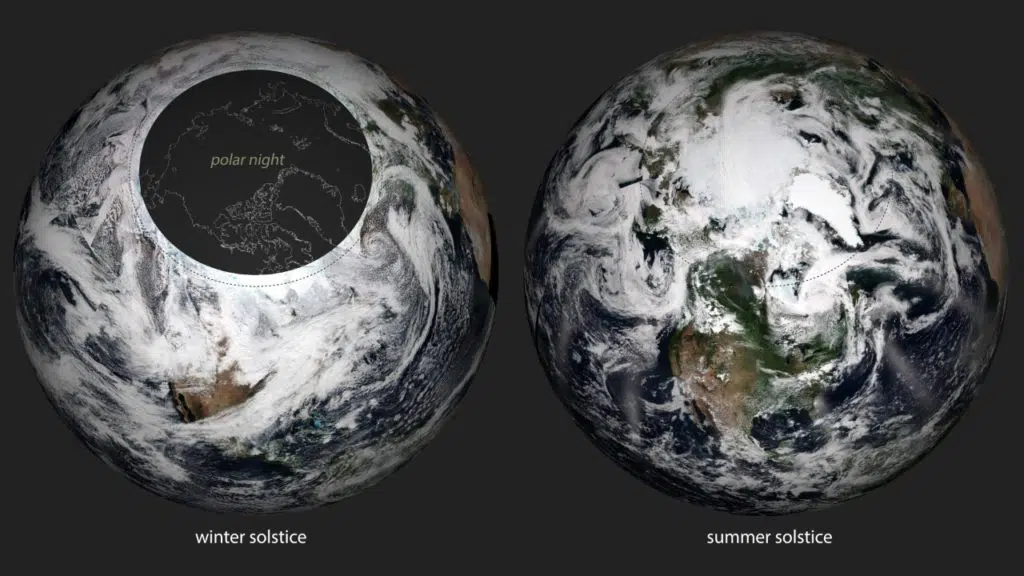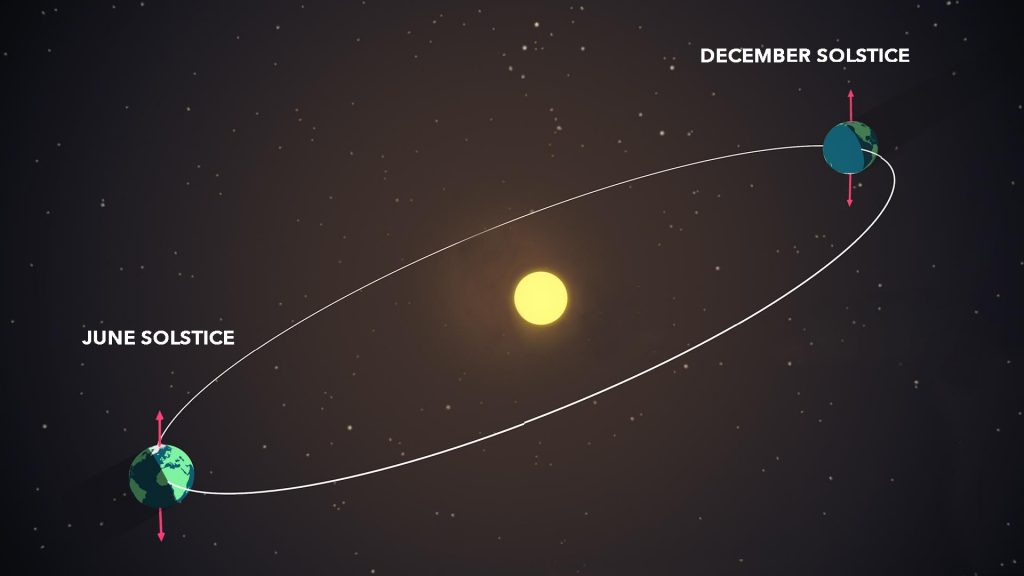
The peoples of the world, or at least those in the Northern Hemisphere, look forward to the Winter Solstice, which marks the shortest day of the year but brings hope for longer, brighter days ahead.
After the passage of six months in which the times of sunlight have been shortening and the nights lengthening in the northern hemisphere, things are changing for the better as we experience the Winter Solstice.
Of course, it’s all due to the tilting of the Earth, as we know now from modern scientific observation. But for thousands of years of human habitation on this planet, the winter was known as a very dark time that simply had to be endured until the light of the spring would emerge. Naturally, the solstice, marking the end of the worst of the darkness, was looked forward to with a zeal that we cannot imagine today.
Winter Solstice brings hope for bright spring days to come
As dark as it is this time of year, the Winter Solstice has historically marked the time at which people could begin to look forward once again to a return of warmth and sunlight all over the Northern Hemisphere.
All ancient peoples who were engaged in agriculture were dependent on a precise understanding of these cycles; their wise sages were sure to mark this first day of Winter with ceremonies every year welcoming the coming of Spring.
Today, the shortest day of the year, our Sun appears as far South as possible; its rays are now hitting the Tropic of Capricorn directly, ensuring that the global North experiences its longest time of darkness before the Earth begins its tilt in the opposite direction once again.

Winters are shorter than summers
The equinoxes, which occur midway through the spring and autumn, occur when the sun’s rays hit the Earth directly over the equator. On those two days alone over all the globe, everyone enjoys the same length of day and night.
The solstice usually takes place on December 21st every year with slight variations on the exact date because our calendar year is not entirely accurate astronomically.
To make sure you can mark it where you are, EarthSky.org includes a conversion table for your time zone as well as other pertinent information.

Intriguingly, another celestial factoid that can give us some much-needed hope this time of year is the knowledge that winter is shorter than summer by an entire five days.
You may well ask how this could be. We actually have the Sun to thank for this small blessing since that is the time that the Earth swings closest to it. When we are in this part of our orbit, called the perihelion, the Earth moves faster than it does when it is further away from it.
All the planets move faster when they are nearer the sun, “making our Northern Hemisphere winters—and Southern Hemisphere summers—the shortest of the four seasons,” Earthsky notes, adding that “it simply takes us fewer days at this time of year to move between a solstice and an equinox.”
Of course, the amount of daylight we experience on this darkest day of the year decreases greatly the closer you are to the North Pole during the Winter Solstice.
While people living halfway between the equator and the North Pole, at 45 degrees latitude, such as those in Lisbon, Portugal, are able to enjoy nine hours and twenty-seven minutes of sunshine today, those who live at the Arctic Circle, such as the denizens of Circle Hot Springs, Alaska, only receive three hours and fourteen minutes of sun. It can only get better from there.
Meanwhile, those who live in Athens, Greece will enjoy nine hours and thirty-two minutes of sun today before they can look forward to the pendulum swinging toward spring once again tomorrow.
Just be grateful you don’t live in Prudhoe Bay, Alaska or in Sapmi, formerly known as “Lapland.” Situated inside the Arctic Circle, there is no sunshine whatsoever in these places on this darkest day of the year.
See all the latest news from Greece and the world at Greekreporter.com. Contact our newsroom to report an update or send your story, photos and videos. Follow GR on Google News and subscribe here to our daily email!



